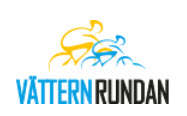Anton's Alternative Anekdoten
Oracle Goodies for XML and JSON
|
XML and JSON are perfect to manage and transfer structured data on the internet. But in a relational database like oracle the data is stored in tables who can be linked via joins. This article will show how to get a XML or JSON out of a SQL statement which contains a master-detail dependency. For easy use, I put all together in a PL/SQL Package which you will find at the end of the article and in the download area. |
Preparation
In our case study we have two tables to store persons and their phone numbers. Both tables are connected through a foreign key. See the following script for the definition of the tables:
create table ex01_person_tb ( id number, name varchar2(50) ); insert into ex01_person_tb values (1, 'Roger Waters'); insert into ex01_person_tb values (2, 'David Gilmour'); create table ex01_phone_tb ( id number, person_id number, phone_number varchar2(50) ); insert into ex01_phone_tb values (1, 1, '543 454433'); insert into ex01_phone_tb values (2, 1, '512 4776443'); insert into ex01_phone_tb values (3, 1, '521 6454423'); insert into ex01_phone_tb values (4, 2, '212 8332464'); insert into ex01_phone_tb values (5, 2, '312 6736423');
Just query the data to see what we have:
|
SQL> select * from ex01_person_tb; |
To connect these two tables, normaly we use a simle join. In our case this is not the way we want to display the data because if we do like this we will have repeating data (the name). To avoid this, we use a technic in oracle which is called CURSOR EXPRESSION to place detail information in the SQL statement. This is the perfect solution to present the data with all their dependencies like we are used to have it in a XML file. See the following example and the output we will get:
select a.id, a.name,
cursor (select b.id, b.phone_number
from ex01_phone_tb b
where b.person_id = a.id) as phone_numbers
from ex01_person_tb a;
|
SQL> select a.id, a.name,
CURSOR STATEMENT : 3 ID PHONE_NUMBER 2 David Gilmour CURSOR STATEMENT : 3 CURSOR STATEMENT : 3 ID PHONE_NUMBER
|
SQL to XML
In the next step we have to manage it, to transfer the result of the SQL in a way, to get a ready-to-use XML structure. Since the version 9 of the database, Oracle delivers a PL/SQL package called DBMS_XMLGEN which provides all the functionality we need. To hide the complexity and for easy using, I put it all together in a function with the SQL-statement as a parameter and the XML as the return value. To see how it works take a look at the following example:
declare
l_sql_string varchar2(2000);
l_xml xmltype;
begin
l_sql_string := 'select a.id, a.name, ' ||
' cursor (select b.id, b.phone_number ' ||
' from ex01_phone_tb b ' ||
' where b.person_id = a.id ' ||
' ) as phone_numbers ' || ' from ex01_person_tb a ';
-- Create the XML aus SQL
l_xml := itstar_xml_util.sql2xml(l_sql_string);
-- Display the XML
dbms_output.put_line(l_xml.getclobval());
end;
... and the code of the corresponding Package Function:
function sql2xml(i_sql_string in varchar2) return xmltype is
l_context_handle dbms_xmlgen.ctxhandle;
l_xml xmltype;
l_rows number;
begin
-- returns a new context handle to be used in the following functions
l_context_handle := dbms_xmlgen.newcontext(i_sql_string);
-- if null, give a empty tag (e.g. )
dbms_xmlgen.setnullhandling(l_context_handle, dbms_xmlgen.empty_tag);
-- get the XML
l_xml := dbms_xmlgen.getxmltype(l_context_handle, dbms_xmlgen.none);
-- get back the number of rows
l_rows := dbms_xmlgen.getnumrowsprocessed(l_context_handle);
-- close the handle
dbms_xmlgen.closecontext(l_context_handle);
if l_rows > 0 then
return(l_xml);
else
return(null);
end if;
end;
... and the result of the dbms_output:
<ROWSET>
<ROW>
<ID>1</ID>
<NAME>Roger Waters</NAME>
<PHONE_NUMBERS>
<PHONE_NUMBERS_ROW>
<ID>1</ID>
<PHONE_NUMBER>543 454433</PHONE_NUMBER>
</PHONE_NUMBERS_ROW>
<PHONE_NUMBERS_ROW>
<ID>2</ID>
<PHONE_NUMBER>512 4776443</PHONE_NUMBER>
</PHONE_NUMBERS_ROW>
<PHONE_NUMBERS_ROW>
<ID>3</ID>
<PHONE_NUMBER>521 6454423</PHONE_NUMBER>
</PHONE_NUMBERS_ROW>
</PHONE_NUMBERS>
</ROW>
<ROW>
<ID>2</ID>
<NAME>David Gilmour</NAME>
<PHONE_NUMBERS>
<PHONE_NUMBERS_ROW>
<ID>4</ID>
<PHONE_NUMBER>212 8332464</PHONE_NUMBER>
</PHONE_NUMBERS_ROW>
<PHONE_NUMBERS_ROW>
<ID>5</ID>
<PHONE_NUMBER>312 6736423</PHONE_NUMBER>
</PHONE_NUMBERS_ROW>
</PHONE_NUMBERS>
</ROW>
</ROWSET>
XML to JSON
To get a JSON out of a XML the method transform of the Oracle xmltype. Therfore we have to have a XSLT stylesheet which contains all the rules to convert. For easy-use I placed the stylesheet in a string which was returned by a function. The entire string you will find in the appendix:
function get_xml_to_json_stylesheet return varchar2 is
l_xslt_string varchar2(32000);
begin
l_xslt_string := '
...
';
return(l_xslt_string);
end;
function xml2json(i_xml in xmltype) return xmltype is
l_json xmltype;
begin
l_json := i_xml.transform(xmltype(get_xml_to_json_stylesheet));
return(l_json);
end;
The complete example in action:
declare
l_sql_string varchar2(2000);
l_xml xmltype;
l_json xmltype;
begin
l_sql_string := 'select a.id, a.name, ' ||
' cursor (select b.id, b.phone_number ' ||
' from ex01_phone_tb b ' ||
' where b.person_id = a.id ' ||
' ) as phone_numbers ' || ' from ex01_person_tb a ';
-- Create the XML aus SQL
l_xml := itstar_xml_util.sql2xml(l_sql_string);
-- Display the XML
dbms_output.put_line(l_xml.getclobval());
-- convert the JSON
l_json := itstar_xml_util.xml2json(l_xml);
-- Display the JSON
dbms_output.put_line(l_json.getclobval());
end;
... and the result of the dbms_output:
{"ROWSET": [
{
"ID": 1,
"NAME": "Roger Waters",
"PHONE_NUMBERS": [
{
"ID": 1,
"PHONE_NUMBER": "543 454433"
},
{
"ID": 2,
"PHONE_NUMBER": "512 4776443"
},
{
"ID": 3,
"PHONE_NUMBER": "521 6454423"
}
]
},
{
"ID": 2,
"NAME": "David Gilmore",
"PHONE_NUMBERS": [
{
"ID": 4,
"PHONE_NUMBER": "212 8332464"
},
{
"ID": 5,
"PHONE_NUMBER": "312 6736423"
}
]
}
]}
Appendix
Documents and Links
The XSLT
The XSLT to convert the XML to JSON
|
<?xml version="1.0" encoding="UTF-8"?> Redistribution and use in source and binary forms, with or without modification, Redistributions of source code must retain the above copyright notice, this Neither the name of the dzLib nor the names of its contributors may be used to THIS SOFTWARE IS PROVIDED BY THE COPYRIGHT HOLDERS AND CONTRIBUTORS "AS IS" AND <xsl:output indent="no" omit-xml-declaration="yes" method="text" encoding="UTF-8" media-type="text/x-json"/> <!-- ignore document text --> <!-- string --> <!-- Main template for escaping strings; used by above template and for object-properties <!-- Escape the backslash (\) before everything else. --> <!-- Escape the double quote ("). --> <!-- Replace tab, line feed and/or carriage return by its matching escape code. Can''t escape backslash <!-- number (no support for javascript mantise) --> <!-- boolean, case-insensitive --> <!-- item:null --> <!-- object --> <!-- array --> <!-- convert root element to an anonymous container --> </xsl:stylesheet> |






